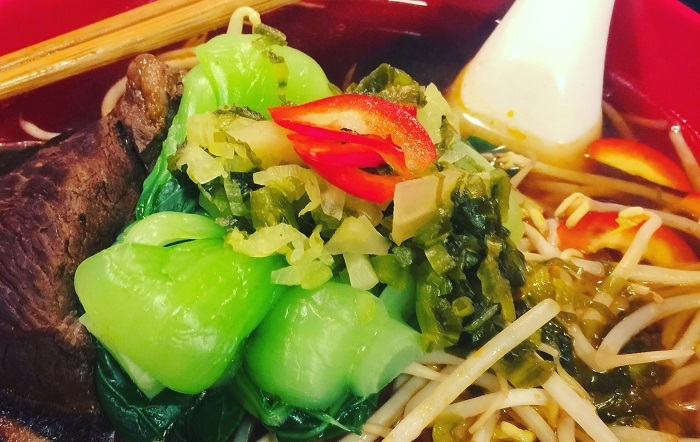I fell in love with Taiwanese Braised Beef Noodle Soup when I used to work in Monterey Park CA, the mecca of some of the best Chinese food in L.A. On the rare occasions where we had a chance to leave the office for lunch, we’d invariably find ourselves in a noodle shop, which is where I first set my taste buds on this rich and flavorful dish. Where has this been all my life? And why did it take me so long into adulthood to discover it? I guess I’ll just have to add that to the pile of enigmatic life questions for now; in the meantime I was determined to figure out how to make this for myself.
After research, tests and trials, I’ve landed on this recipe which I’ve been making for the last 10 years. Key to this dish is picking the right cut of beef (think beef short ribs or shank) that can withstand the low & slow cooking process. Yes, you will need to exhibit patience as the broth simmers happily away and the beef tenderizes to fall-off-the-bone goodness. But other than time, there’s not much effort required. You can try using a pressure cooker or Instant Pot – I didn’t have one when I first started making this so I’ve never tried it myself. I can’t imagine why it wouldn’t work though, as long as your cooker is big enough to hold all the liquid and ingredients. You may just need to make a smaller portion if using this tool.
Depending on where you live, some ingredients may difficult to find. If you have a Chinese grocery store nearby, you should be able to get everything you need. Otherwise, you can buy most everything on Amazon these days. So enjoy this on the next cold day (or heck, on a warm day just crank up the A/C)!
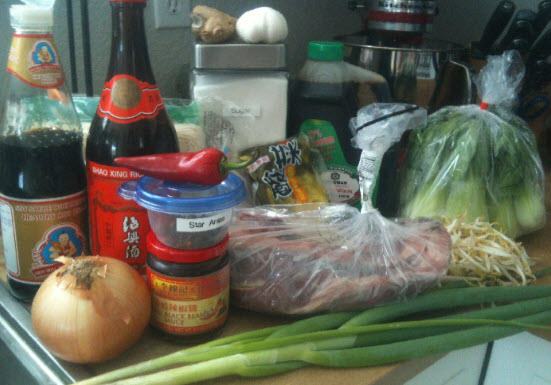

About the Ingredients
Shiao Xing Rice Wine
Shiao Xing (sometimes written as Xiao Xing or Shiao Hsing) is a chinese rice wine that commonly use in many Chinese dishes. If you are unable to find it, you can substitute with dry sherry, mirin, or cooking sake. Substitutes will produce a slightly different flavor but it will work.

Mushroom Soy Sauce
Mushroom flavored dark soy is commonly used in braised dishes and gives any soup or broth a rich dark color. The two brands depicted here differ in how dark they are. The one on the left is a darker color soy, which will give you a darker color broth. In the video below, I used the one on the right, which gives it a medium color broth. Either will work great; it’s matter of preference in terms of how dark you like your broth.
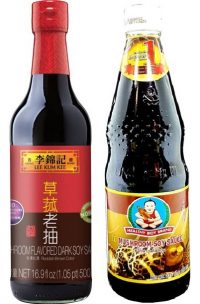
Doubanjian (Chili Bean Paste)
Also called/labeled as toban-djan, broad bean chili sauce, or fermented chili bean paste. It is a salty and savory bean paste originating from the Sichuan province, and is used to flavor many Chinese dishes like mapo tofu. There are many brands and each taste a little different. Supermarkets often carry the two bottles pictured on the right in the Asian/International food aisle. While it is contains chili, I personally do not think it’s spicy. I love the flavor this gives to the soup so I tend to use it fairly generously.
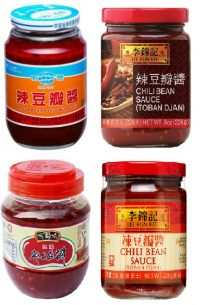
Star Anise
This is a spice native to north east Vietnam and southwest China. It often is added whole to soups and stews, and adds a licoricey-peppery flavor.
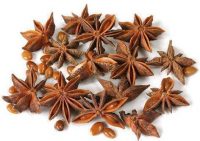
Chinese Five Spice Powder
You should be able to find this in any supermarket spice aisle, but if you will find it for a lot cheaper in an Asian supermarket. Chinese five spice powder is as the name implies – it is a blend of five different spices – star anise, cloves, cinnamon, Szechuan peppercorns, and fennel seeds. You can make this yourself at home if you really want to, but easier to just buy the finished product from the store.

Sour Pickled Mustard Greens
Mustard greens are related to cabbage and collard greens, commonly used in many Asian dishes. They are long and leafy with firm, crunchy texture. For this dish, you want to get the pickled version, which like any pickle can be either salty or sour. Make sure you get the sour kind. Dice it up into small pieces and use it as a topping for the noodles. It will give the dish a nice hit of acidity and crunchiness. Add a little or a lot, that’s completely up to you. Leave it out if you want or if you can’t find it. I personally love it in this dish and will add a generous amount to my bowl.
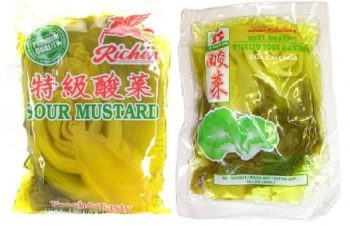

Taiwanese Braised Beef Noodle
Print Pin RateIngredients
- 3 liter water, about 12.5 cups
- 1 large onion, quartered
- 1 large tomato, quartered
- 2 stalks green onion, cut into 2-3" pieces
- 4 pieces ginger, thick sliced, about 2-3" long
- 5-6 cloves garlic, smashed
- 4 star anise
- 1 tsp Chinese five spice powder
- 2 tbsp sugar
- 1/3 cup Shiao Xing chinese rice wine
- 1 cup low sodium soy sauce
- 1/2 cup mushroom flavor dark soy
- 3 tbsp chili bean paste
- 8 pieces beef short rib
- 4 baby bok choi, or whatever asian greens you prefer
- 1 package Taiwanese style noodles
- 1 cup sour pickled mustard greens
- 1 cup green onions, sliced
- bean sprouts
- red chilies, sliced or chopped, optional
How I Make It
- Bring a large pot of water to a boil and blanch the ribs for about 10 minutes. You will start to see foam and other scum float up to the top. Drain the ribs in a colander and discard the water. This will help remove some of the impurities from the bones which will result in a clearer broth in the end.
- Refill the pot with the 3 liters of water. Add onion, tomato, green onion pieces, ginger, garlic, star anise, Chinese five spice powder, sugar, Shiao Xing wine, both soy sauces, and chili bean paste. Add the ribs back in.
- Bring the pot to a boil, and then cover and simmer for about 4 hours or until the rib meat is tender. Skim off the excess fat (oil) and/or foam from the surface during the first 30-60 minutes. If you make this ahead of time, the fat will solidify at the top when the soup has cooled. This makes scooping out the excess fat much easier.
- Cut the bok choi in half length-wise or chop in large chunks. Blanch the bok choi (or whatever greens) you've selected for a couple of minutes. Be careful not to over blanch then or they will be mushy and soggy in your soup. Rinse in cold water or cool in an ice bath to stop them from cooking. Set aside.
- When the soup is ready, and you're ready to serve, prepare the noodles following the package instructions. Portion out the noodles into individual bowls.
- Put some bean sprouts on top of the noodles. Add a few pieces of bok choi and 1-2 pieces of rib. Ladle the broth through a strainer into the bowl. Top with pickled mustard greens, sliced green onion, and sliced fresh chilies (if using)
- Serve hot, and slurp your way to noodle heaven!

